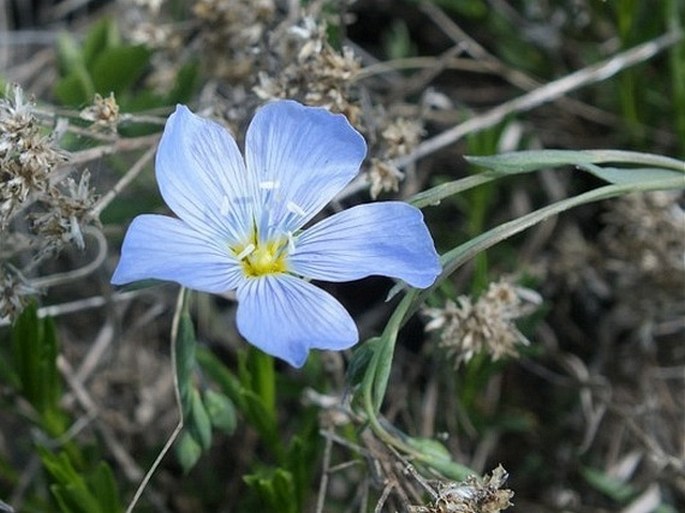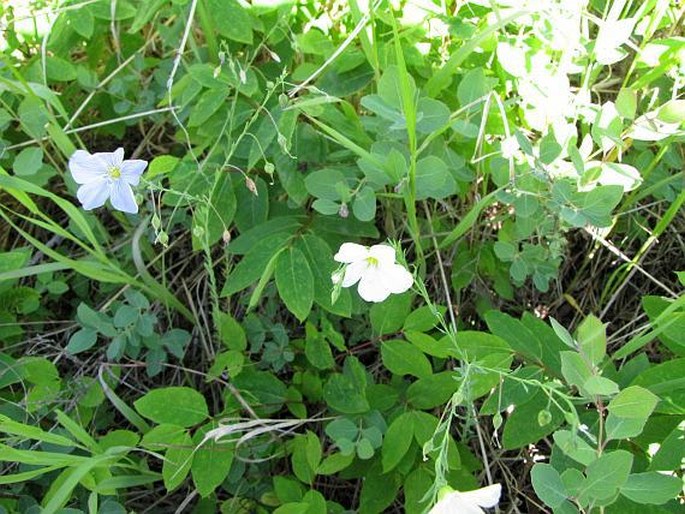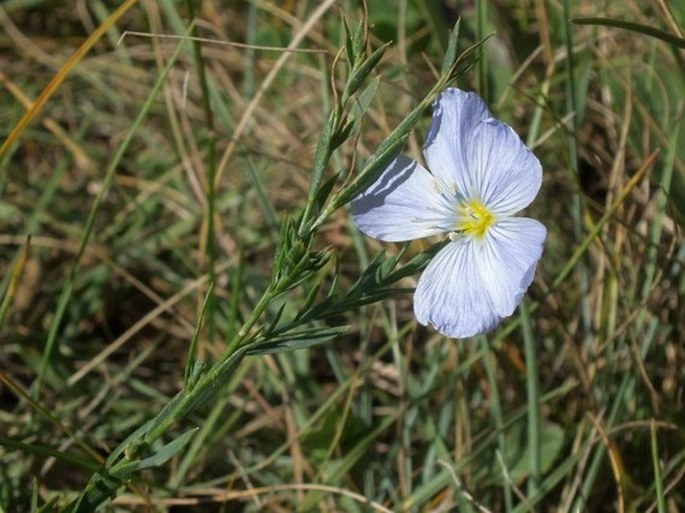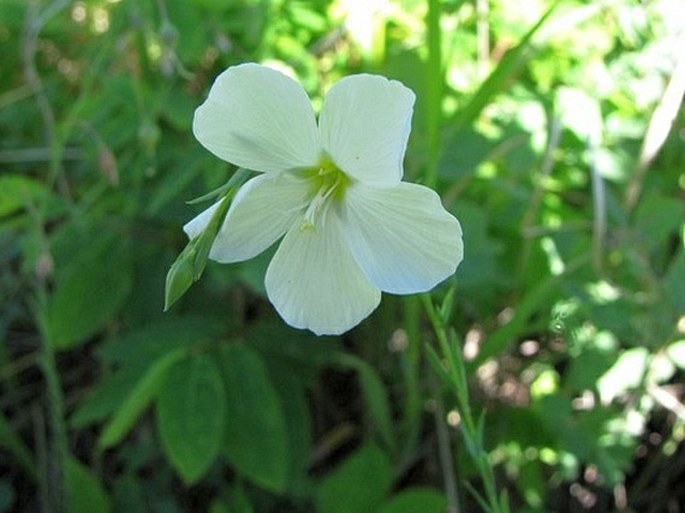Syn.: Linum decurrens Kellogg, Linum lewisii f. albiflorum (Cockerell) H. St. John, Linum lyallanum Alef., Linum sibiricum var. lewisii (Pursh) Lindl., Linum perenne f. albiflorum Cockerell
Family: Linaceae S. F. Gray

Distribution: North American species covering most of the continent with exception of south east of US. It reaches northern Baja California. Three varieties are recognized; the nominate variety covers mostly western part of the continent, L. l. var. lepagei covers extreme north east and L. l. var. alpicola is found in California, Nevada, Colorado and Idaho.
Ecology: Prairie grasslands, dry slopes, plains to montane. Blooms from May to August.

Description: Perennial herb, 10–70 cm tall, from woody rootstock. Stems erect, branching from base, branching at top, hairless. Leaves alternate, numerous, linear, 1–2 cm long, smaller towards top. Inflorescence is a a few-flowered corymb; flowers pale blue to sky-blue, rarely white, saucer-shaped, 2–3 cm across, lasting 1 day only, pentamerous, petals fragile, very thin. Fruit is a round capsule on curved pedicel, 5 mm across, seeds 8–10.
Use: Stems contain the same long, tough fibre as Common Flax (Linum usitatissimum) and native tribes used it as such. The seeds were used as food and for production of oil. Blue Flax is an excellent ornamental plant, favourite of gardeners.



These images were taken in Canada, Alberta, Calgary, Confluence Park (June and August 2013).


